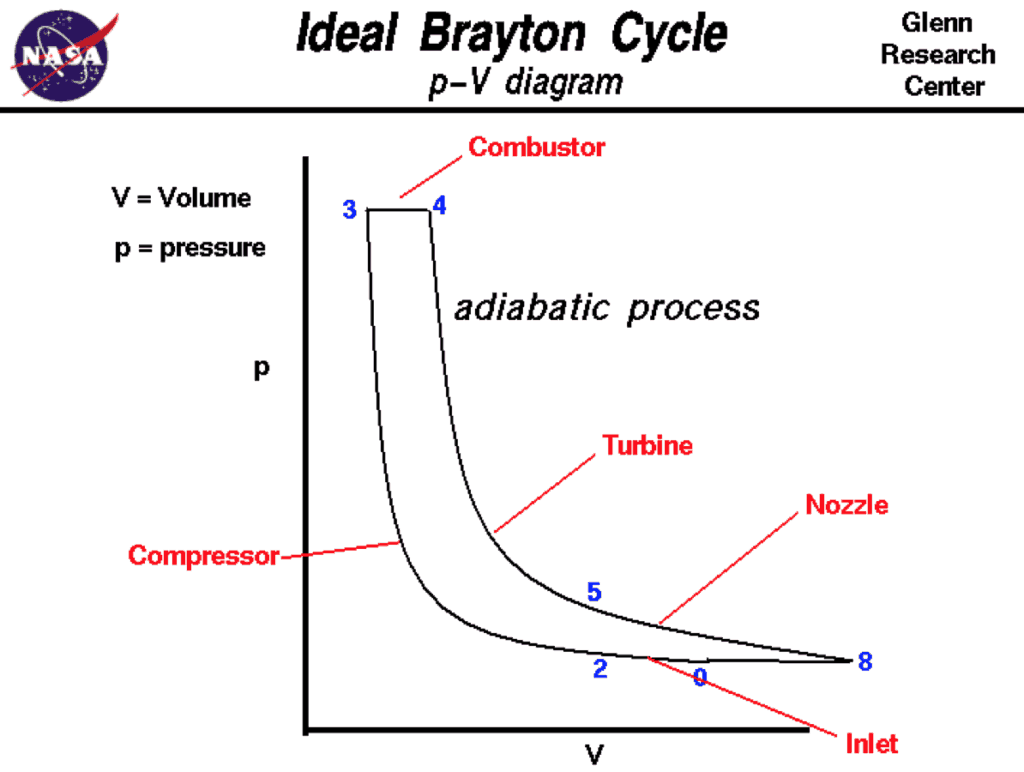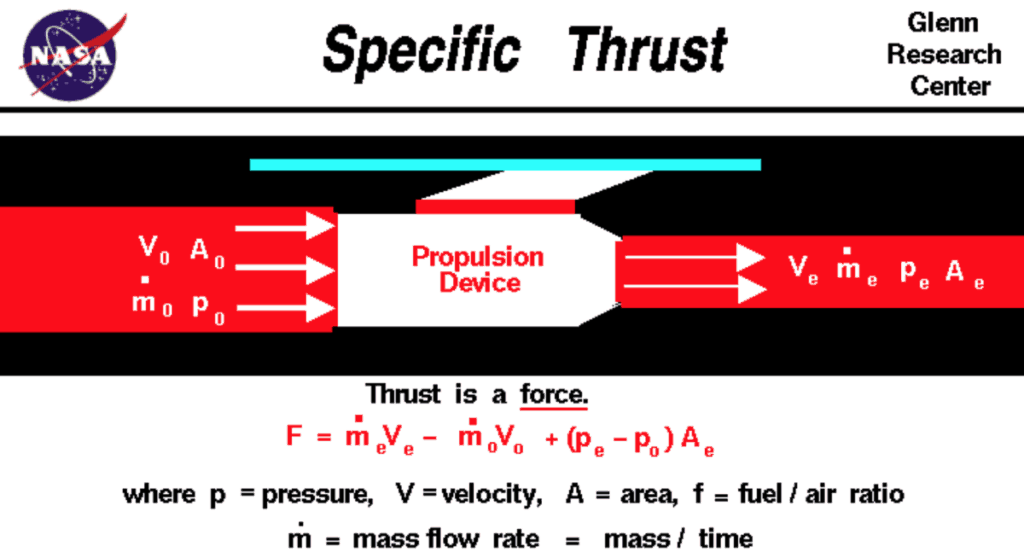
Turbojets and turbofans are often discussed interchangeably in the aviation world, but are actually somewhat different types of engines. Both are “jet” engines and are in some ways indistinguishable from one another, but important fundamental differences exist that effect the safety, efficiency, and performance of these engines. Many of the differences between these engines are a function of the thermodynamic properties of their respective designs, and decades of research and development activity.
Turbofan engines are turbojets that include a ducted fan at the front of the engine, allowing better efficiency and performance compared to “pure” turbojets. Turbofans have also benefitted from decades of technology improvements to become extremely safe and reliable.
This post is part of a three-part series comparing piston, turboprop, turbofan, and turbojet engines. You can see the other two posts here:
- Piston vs. Turboprop: Safety, Efficiency, and Performance
- Turboprop vs. Turbofan: Safety, Efficiency, and Performance
Turbojet vs. Turbofan: Design Differences
As with all engines there are four “stages” in the combustion cycle for both turbojets and turbofans: intake, compression, combustion and exhaust.
These stages occur simultaneously and continuously through the engine with each stage within the engine dependent on the next.
Both engine designs pass air through an intake, to a compressor section, combustion section, expansion turbine, and finally an expansion nozzle. Thrust is produced by this expansion nozzle, while the turbine is used to power the compressor.
The major difference between turbojets and turbofans is the addition of a ducted fan and bypass air to the turbofan engine design.
This fan is mechanically tied to the compressor section, but much of the air that flows through this fan is ducted around the “core” of the engine as bypass air, and is exhausted along with the combustion exhaust at the rear of the engine.

As seen in Figure 1, the core of the engine where the compression, combustion and expansion sequence occurs may be much smaller than the fan itself.
The relationship between the amount of air flowing through the core and the air bypassing the core is the “bypass ratio.” This ratio varies depending on the design goals for the engine, with engines using small ratios being deemed “low bypass ratio turbofans” and larger ratios “high bypass ratio turbofans.”
Low bypass turbofans are commonly used in fighter jet engines and have ratios in the 0.30 to 0.50 range, while modern high bypass engines may have a ratio as high as 9 or 10.
Turbojet vs. Turbofan: Safety
Fundamentally, both engines represent the same basic mechanical systems, and thus are comparable in terms of mechanical reliability. The safety benefits of turbofans result from subtle design differences and from decades of improvements in engine controls and material science.
Considering high bypass turbofans, the larger inlet diameter of the engine allows for a more stable pressure gradient entering the core of the engine. Stable pressure gradients are required for reliable operation of turbine engines.
Earlier turbojets have narrow inlets (as an example, see the 737-200 and its JT8D engine discussed here: Why are 737 engines flat on the bottom?), resulting in reduced margins for angle of attack and sideslip to maintain smooth airflow through the engine.
Turbofans, particularly high bypass models locate the core away from the cowling edge and behind the fan, smoothing inlet distortion effects at the inlet of the engine core.
Low bypass turbofans benefit from typically being imbedded in the fuselage of a fighter, where a long inlet duct acts to directs and smooth airflow, minimizing distortions at the fan face.
The increased likelihood of severe inlet distortions for turbojets makes them more susceptible to compressor stalls or “unstarts.”
This phenomenon is quite literally an aerodynamic stall occurring on the compressor blades due to improper pressure gradients within the engine. If severe enough, compressor stalls can lead to engine shutdown, either commanded by the crew, the FADEC or simply by mechanical failure.
The decades of research, development and operational data collected by operators and manufacturers have led to significant improvements in engine materials and reliability.
The lessons learned on early turbojets have been applied to successive generations of turbofans for use in a wide variety of applications.
The newest engine designs feature turbine sections able to withstand previously unsustainable combustion temperatures, carbon composite fan blades, and exotic alloys designed to withstand extreme pressures and temperatures.
Improved materials and controls are not inherently unique to the turbofan engine, and could be included in turbojets, but the cumulative effects of these improvements allow levels of performance and safety that have made turbojets obsolete.
Effectively, the reliability of modern turbofans compared to turbojets is like comparing the engine in a modern car to the old manual choke, carbureted engines of the 1930s or 1940s. As a testament to the improvements in jet engine reliability, the U.S. Navy selected the single engine F35 as the successor to a long line of twin engine jet fighters, upending decades of naval fighter design doctrine.
Turbojets vs. Turbofans: Efficiency
As discussed previously turbofans come in two “flavors” each serving a particular design goal: high bypass and low bypass.
High bypass engines are the most familiar to the general public as these are the type used on business and commercial aircraft around the world. Low bypass engines are used in military fighter aircraft with virtual exclusivity.
Turbojets in contrast pass all of their intake air through the compressor to the combustion section of the engine. To understand the effect of these design differences it is useful to review the basic thermodynamic principals behind turbine engines.

Image Credit: NASA
Reviewing the diagram in Figure 2, two important aspects of the turbine engine are apparent, the more compression that can occur; the more energy can be extracted by the turbine and nozzle.
Ideally, the turbine and nozzle would return the exhaust to the original pressure and volume at which it was ingested by the engine. The more energy extracted by the turbine, the more compression work can be done to aid the combustion process.
The combustion process, as with piston engines, adds energy to the system, and in turbine engines powers the turbine itself. In turbojet and turbofan engines, the turbine is sized to drive the compressor section and fan as appropriate.
The higher the combustion temperature, the more energy can be extracted while maintaining the required exhaust velocity and thus thrust at the nozzle. To understand the factors effecting total thrust output it is worth considering a mass flow diagram of a turbine engine.

Image Credit: NASA
Setting aside the math above, thrust is simply a relationship between the mass of fuel and air moved by the engine and the final velocity of that fuel air combination.
So to increase the thrust of a turbine engine, increasing the amount of fuel and air exhausted, and/or its velocity increases the thrust output of the engine.
Taking both diagrams above together then the efficiency advantages of a turbofan engine are summarized by understanding the effects of adding the ducted fan and bypass air.
Turbofans are able to accelerate significant amounts of mass without burning additional fuel because of the additional fan. The fan extracts some additional energy from the exhaust via the turbine, slowing the exhaust velocity slightly, but substantially adds to the mass via the bypass air.
The efficiency of the engine can be measured as ratio of the amount of fuel burned to produce a given amount of thrust, typically described as pounds of fuel per pound of thrust (Thrust Specific Fuel Consumption – TSFC).
Modern engines are quite capable of reaching TSFC values in the 0.5-0.6 range, meaning a pound of fuel may produce two pounds of thrust. Specific data is somewhat difficult to obtain as it is closely guarded by manufacturers and operators.
This principal is straightforward for high bypass ratio engines, but leaves a question of why low bypass ratio turbofans are preferred in modern military applications.
Fundamentally, bypass air is useful for cooling and afterburner performance. Low bypass ratio engines often use bypass ratios in the 0.3 to 0.5 range, meaning there is very little additional mass flow to improve efficiency. However cooling the combustion section using outside air allows the engine to perform at higher combustion temperatures.
When afterburners are in use, the bypass air also supplies additional oxygen to improve the thermal performance of the nozzle. Afterburners function to increase the temperature and mass flow after the turbine section; while the nozzle controls the expansion of the gas to increase the velocity. The additional oxygen flow increases the associated temperature rise and available thermodynamic energy in the afterburning system.
Turbojets vs. Turbofans: Performance
Exact performance data for turbojet and turbofan engines is somewhat difficult to acquire without access to specific design and manufacturing data. But some general trends can be identified to characterize the performance differences between turbojets and turbofans.
Raw thrust output is a somewhat poor description of engine performance.
The largest turbofans used on commercial airliners such as the 777X’s GE9x produce more than 100,000 pounds of thrust, while the F-35’s Pratt and Whitney F135 engine produces a comparably small 43,000 pounds. In the case of the GE9x, the engine simply moves more air! The GE9x has a fan diameter of 111 inches compared to the F135’s 46 inches.
Turbine engine performance is better described as a function of thermodynamic efficiency, responsiveness, and thrust output relative to atmospheric conditions.
Thermodynamic efficiency is described in the section above in general terms, but in specific, the cooling air available to turbofan engines plays a significant role in their increased performance.
In essence, turbofans are able to use some of their thrust as cooling flow for the turbine and combustion sections of the engine. This increases the operating margins within the engine and allows higher compression ratios within the engine.
Additional advances in material science have allowed ever higher combustion and turbine operating temperatures, allowing yet more energy extraction for larger fans and higher exhaust velocities.
Turbofan thermodynamic efficiency ultimately is related to how large a fan can be driven using as small a core as possible, an advantage turbojets cannot use.
Engine responsiveness is a “squishy” measure of engine performance, but has important implications, particularly for fighter aircraft.
Historically turbojet engines have been very slow to accelerate after the pilot commands additional thrust, and even the best turbofans are not instantaneous in their response, but the addition of bypass air allows a convenient path to “vent” pressure during rapid engine acceleration.
Initially turbojet engines were notoriously slow to accelerate and though turbojet response improved over time, modern turbofans provide substantially improved operating characteristics.
This is partially a result of the advent of FADEC (Full Authority Digital Engine Control) technology and partially an advantage of the pressure management techniques available to turbofans.
Ambient atmospheric conditions impact turbojet and turbofan engine performance in fundamentally identical ways.
Warm temperatures, high elevations, humidity, and density altitude have similar impacts to both engine types. Turbofans are better able to manage these effects thanks to the increased operating temperatures available to them, but ultimately the same atmospheric considerations that impact 172 engine output impacts A380 engine output.
Ultimately the performance difference between turbojets and turbofans is a function of the thermodynamic improvement and advantages of turbofan engines.
Conclusion
Turbojet and turbofan engines are closely related engine technologies. Turbofans are fundamentally turbojets with an additional ducted fan added to the front of the engine, allowing the engine to provide additional thrust via bypass air.
The safety improvements of turbofan engines are the result of decades of technological improvements while performance and efficiency improvements are fundamentally a result of thermodynamic efficiency resulting from the bypass fan.
Turbofans are ultimately a refinement and improvement of the underlying turbojet technology.
Additional reading related to this article:



